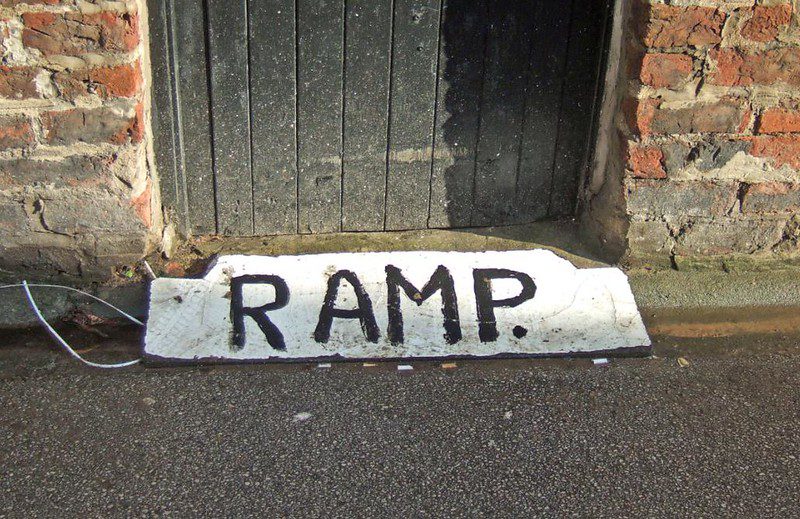I was traveling a lot this fall, as usual. Back in September, I attended a pre-conference strategizing session on inclusionary housing at the National Housing Conference's Solutions 2013 event in Atlanta.
The session was a useful and concrete discussion of the specific things that people might need in order to craft and win inclusionary housing campaigns.
A bigger picture question I keep coming back to though, as I travel around, is how do we strategically and consistently make the case for when and where inclusionary measures should be put in place.
Popular residential areas in unquestionably hot markets are places where the need is clear.
But downtowns across a range of city types and housing markets that essentially have had no housing and are seeing a boom in conversions of old office and manufacturing space into luxury housing can easily slip under our radar until it's too late, since they don't tend to be the neighborhoods that housing advocates are working in.
Atlanta, despite being hard hit by the foreclosure crisis, is clearly a city with robust economy. Though it is famous for sprawl, people are also moving back downtown, especially students. I stayed via AirBnB in the spare bedroom of a massive, and clearly quite new, converted loft apartment near the meeting of MARTA's two rail lines. Atlanta has no inclusionary housing measures, though it does have quite the visible homeless population.
My own city of Albany, NY, is a place were we are focused more on dealing with vacant properties than with the idea of inclusionary housing. And yet downtown luxury housing is popping up, part of an intentional strategy to create a 24-hour neighborhood, with rents 2 to 2.5 times the rents in most of the rest of the city. I'm happy to see it, but I fear we won't talk about making sure it's inclusive until it's too late.
Nashville, Tenn., did devote some of the TIF funding for downtown housing to an affordability requirement, but the restrictions were only for 5 to 7 years, and many questions were raised about whether the affordable units, often tiny condos, actually benefited people in need. Five to seven years is an almost meaningless restriction length: it's hardly even long enough for a strategic comeback to really complete itself.
After Atlanta, my next trip was to Detroit. Detroit may seem like a strange place to think of talking about inclusionary housing, given its famously crashed housing market and oversupply of houses. But that's only one side of the story.
As one Detroiter told me, “We do not have an oversupply of decent housing people want to live in.”
In fact, while the urban prairies and burnt out shells are certainly there, as are the troubled neighborhoods with 40 to 50 percent vacancy, new apartment buildings are also popping up in downtown and all along the waterfront.
The founder of Quicken Loans and Rock Ventures famously committed to downtown Detroit a few years back, bringing his business and his employees downtown, investing in other local businesses, helping with waterfront revitalization, etc. Matt Cullen, CEO of Rock Ventures and Opportunity Detroit opened the NACEDA conference with a optimistic and impressive description of Detroit's downtown renaissance, including moving 7500 Quicken Loan employees there. Included in that speech was a description of new downtown housing 97 percent full, some with wait lists hundreds long.
This doesn't mean Detroit's troubles are over. But when it comes to those places that are experiencing that kind of demand, it seems to me like it adds insult to injury if the housing near the job growth is inaccessible to low-income residents of other parts of the city.
It's hard to imagine Detroit pushing back on anyone willing to invest in its borders right now with anything like an inclusionary ordinance though. Still, I hope that affordable housing of some sort will be more on Rock Ventures' radar after the connections they say they are just starting to building with local community developers grow stronger.
And I was pleased to hear at the Opporunity Finance Network's NEXT Awards in Philadelphia later in October, that just up Woodward Avenue from downtown, in Midtown Detroit, where there is an eds-and-meds based revival that has been proceeding more slowly and steadily, that NCB Capital (which was getting an award to help it continue its place-based investments there) was ensuring that new residental development had an inclusionary and long-term affordable component.
It's much harder to create affordability once it's gone than to preserve it. Even in downtowns where there isn't as much displacement danger, I think we'll eventually regret it if we allow a housing boom to shut out all the people who are going to work the less high paying jobs that keep those downtown revivals functioning.
Photo of downtown Detroit by Ian Freimuth, CC BY-NC-ND.






Comments